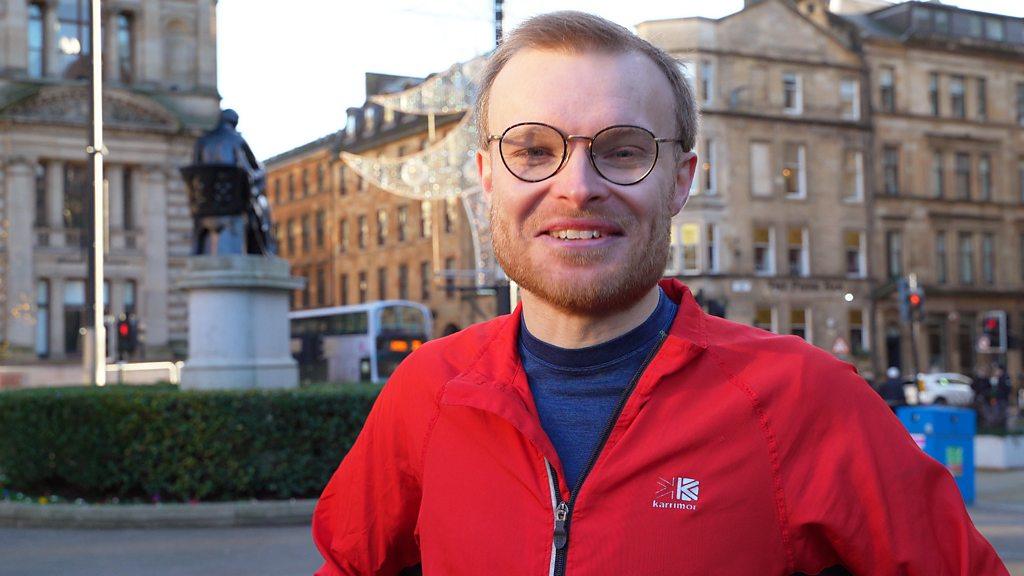The man who ran all of Glasgow's 6,000 streets
- Published
“I’ve been literally everywhere” – The man who ran all 6,000 streets in Glasgow
"I get lost quite a lot," Michael Shanks admits. "My map reading is atrocious.
"And inevitably you end up running the same street several times."
Over the past two years Michael has run along every single street, road and lane on the map of Glasgow, external - but he says he is more of an explorer than an athlete.
In total he has run more than 2,300km (1,400 miles), double the actual length of the city's 6,100-plus streets.
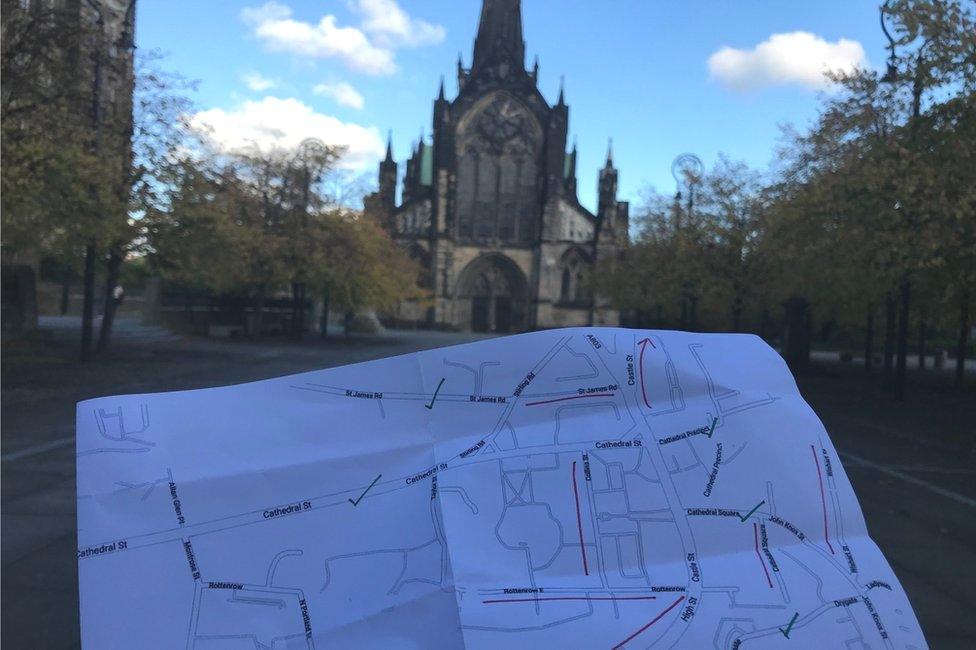
Michael plots his route before setting out but often gets lost
Michael, a 33-year-old modern studies teacher, started his mammoth task as a way of making the most of his limited exercise hours during the first Covid lockdown in March 2020.
"I realised I tended to run broadly the same route round the west end of Glasgow where I live," he says.
"Even streets that were pretty close to me I had just never gone down."
He started adding new streets and venturing to different areas, then eventually started to consult maps and plan his routes.
His research led him to Rickey Gates, who had run every street in San Francisco in 2018. The ultra runner did it in just 45 days, clocking up an average of 29 miles a day.
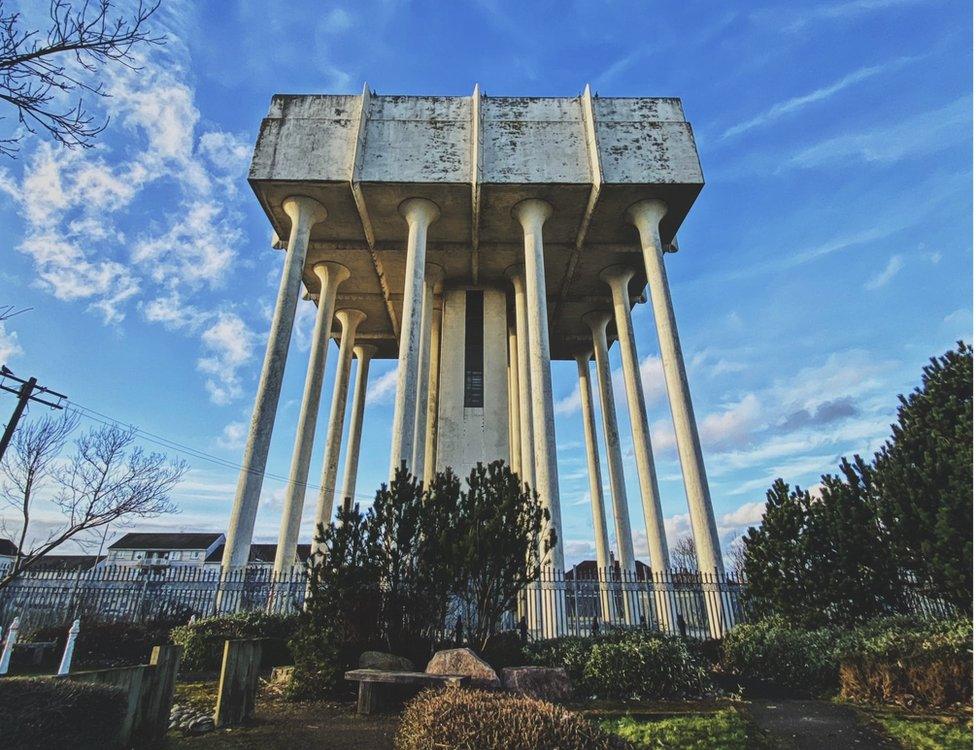
The water tower in Cranhill, one of the easier parts of the city to run in
Michael says he never intended to match the American's speed, but he had written about the challenges such as trying to avoid the inefficiency of running the same street again and again.
This creates a mathematical conundrum - how do you travel along every road in a city with the least possible distance?
"Cul-de-sacs are a nightmare," Michael says.
"There is nothing you can do but run all the way to the end of it and then all the way back.
"New housing schemes are the worst because they are just full of dead ends. That adds a lot of mileage."
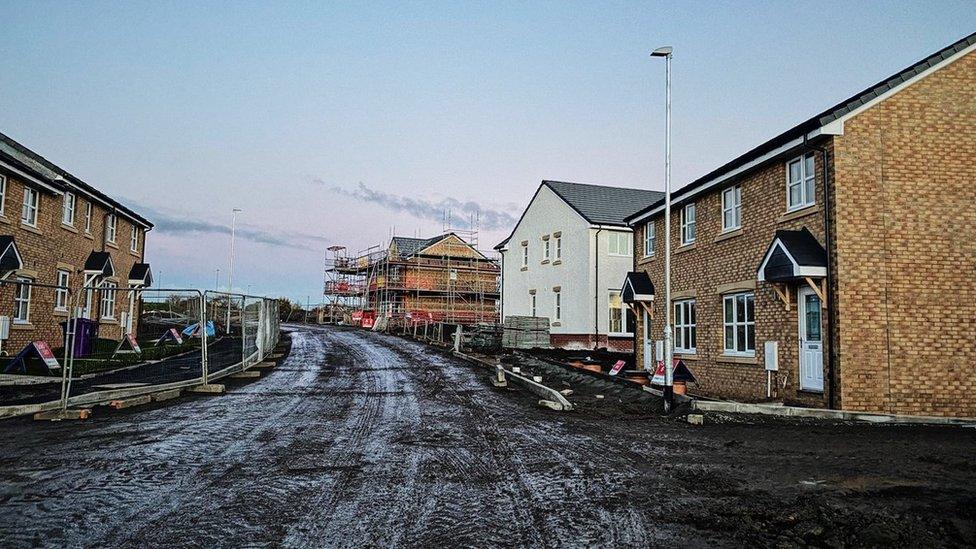
Some streets are unfinished or fenced off
But Michael reserved the accolade of "least favourite street" for a bit of Moray Gardens in the south of the city. When he finally found it, the road turned out to be an extremely steep, muddy track surrounded by a forest.
Some parts of the city are well-suited to his task, such as Garthamlock and Craigend, which were built in the 1950s and 1960s with roads that are linked by pedestrian lanes.
The traditional gridiron layout of many of Glasgow's tenements is also good for methodically ticking off streets, but there are some areas where it is less clear.
Parts of Easterhouse and Possilpark are full of streets where the tenements were demolished 20 years ago and nature has reclaimed most of it.
However, these "ghost streets" are still mapped so Michael had to run them.
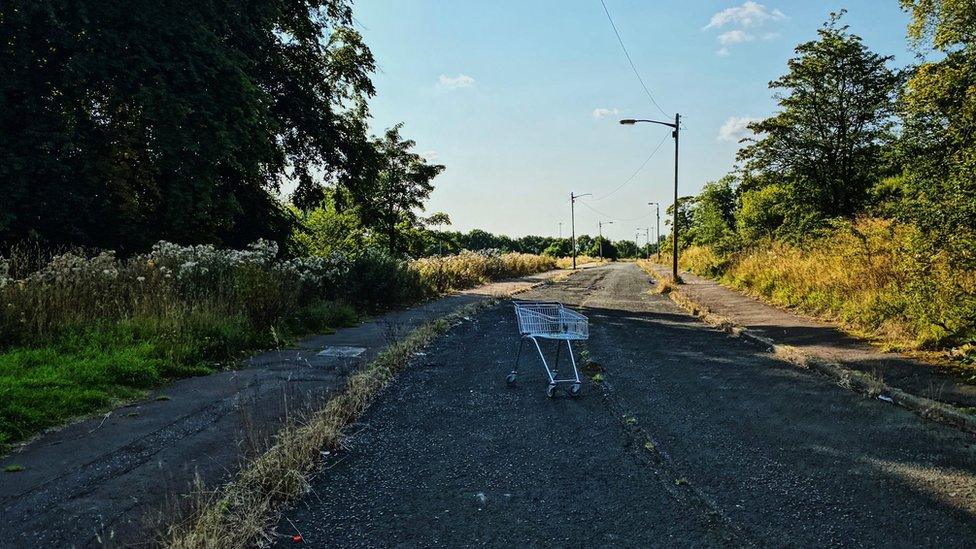
Easterhouse has streets that don't exist any more
"I nearly got run over by a dirt bike in Possilpark," he says.
"I turned a corner and there it was right in front of me.
"I think my mother would rather I did not run down some of these streets."
Michael is quick to add that despite Glasgow's enduring "no mean city" reputation, he has never encountered any trouble on any of his runs through some of the most deprived communities in the UK.
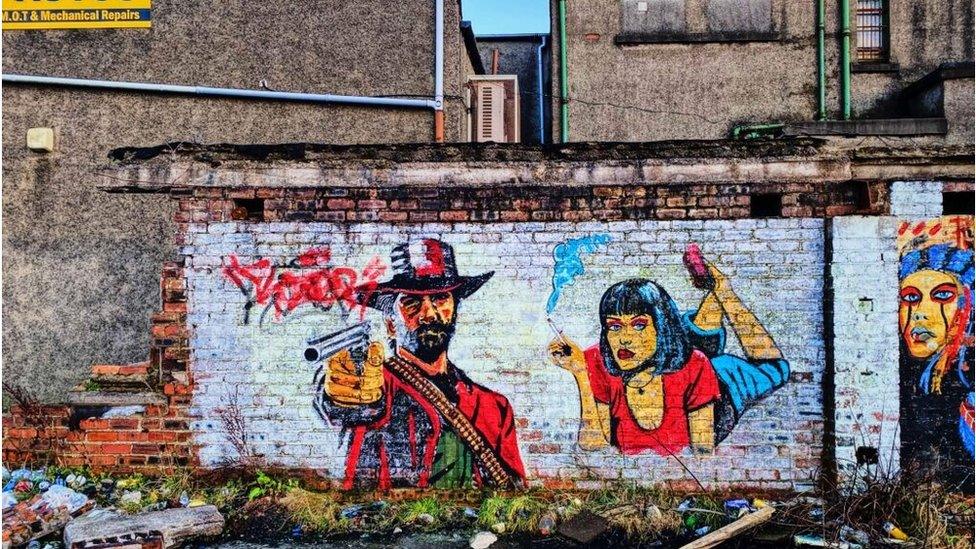
Street art is a recurring feature of the Glasgow landscape
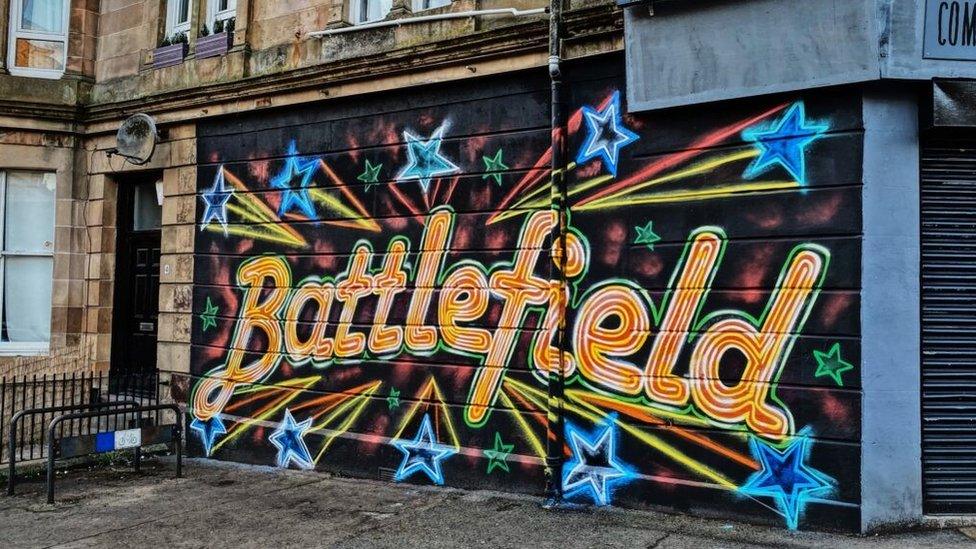
Battlefield is named after a battle involving Mary, Queen of Scots in 1568

The wall outside Partick Thistle football club
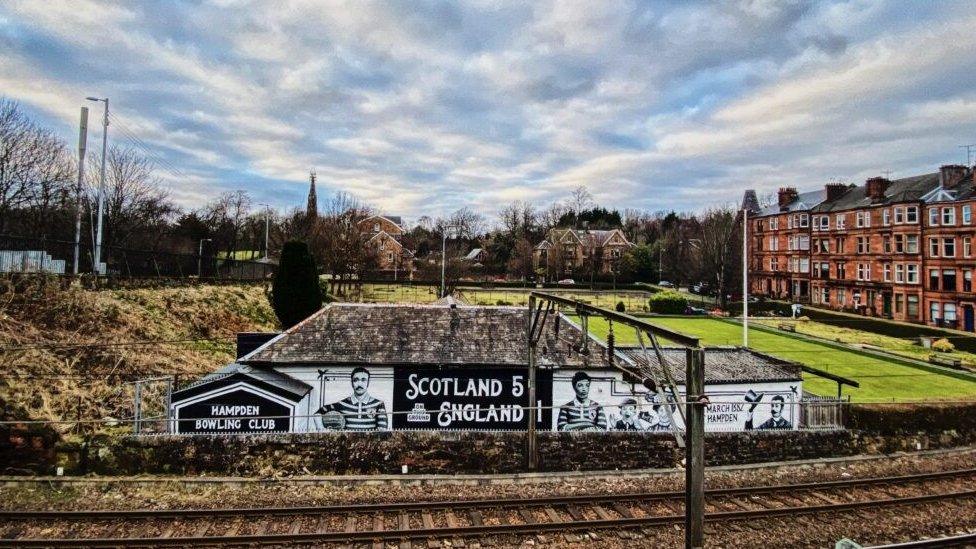
Close to the present Hampden stadium is the site of one of Scotland's most famous early football victories
"I can honestly say there is not a single run in any part of the city where I have thought: 'I need to get out of here quickly'," he says.
"I think that is testament to the fact the city has changed a lot.
"I have found people unfailingly friendly when it is obvious I don't know where I'm going."
He adds: "I'm not a very good runner so usually I pretend to check the map to get my breath back.
"I see people looking and I say: 'I'm not lost, I'm just trying to run every street.' That's an obvious conversation starter."

Snuff Mill Bridge in Cathcart - The mill was built for grain, later converted for cardboard manufacture in 1812 and snuff milling in 1814.
People are usually keen to tell him all about their area, which helps Michael collect information for a book he is planning on the social history of Glasgow.
He has been inspired by a book from 1860 called Rambles Around Glasgow by Hugh Macdonald.
"I am never really going to be an athlete so it is not really a fitness challenge, it is an adventure," he says.
"I have been exploring."
His exploration has uncovered some strange recurring themes.

Michael has become obsessed with no ball games signs
"I have actually become a bit obsessed with 'no ball games' signs because they absolutely infuriate me," he says.
"It's not a relic of a bygone era because they are absolutely everywhere.
"That mentality which says kids should be seen and not heard really annoys me as a teacher."
While ball games are often banned in housing schemes, Michael is also intrigued by football goalposts that crop up in the most unlikely places.
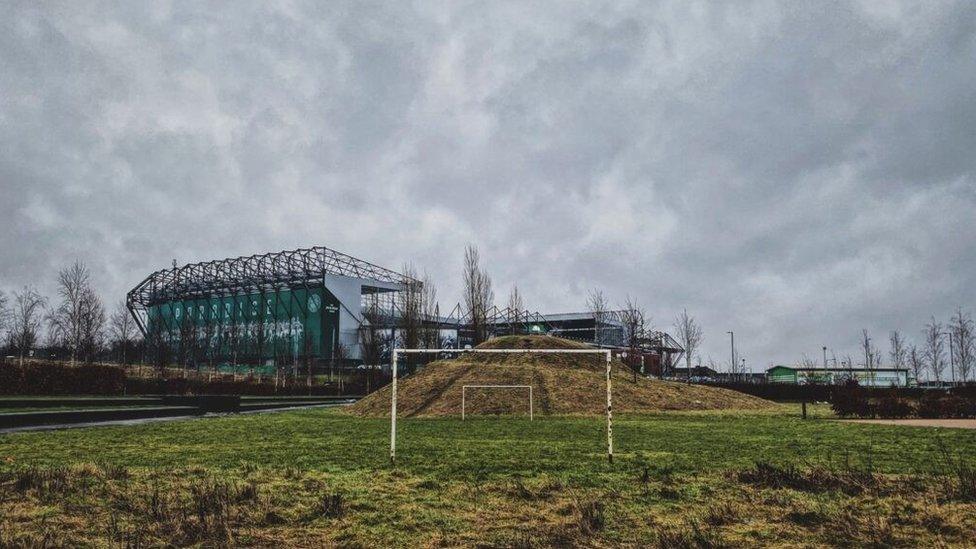
An urban goal stands in contrast to Celtic Park
He also thinks he must be the only person to take a picture of every single Welcome to Glasgow sign, which he comes across every time he reaches the city council boundary.
Michael finished his challenge on Wednesday when he ran down the city centre's George Square, which he had saved for last. There he was greeted by family and friends.
He says he has enjoyed the challenge but is glad to see the back of it.
"I'm relieved but it's quite sad in a way," he says.
"I've enjoyed going on the adventure and I guess there is nowhere left to visit in Glasgow. I've been literally everywhere.
"But the map will update soon. There is housing being built all over and I won't be at 100% for very long. So I'll be back at it in a few weeks."
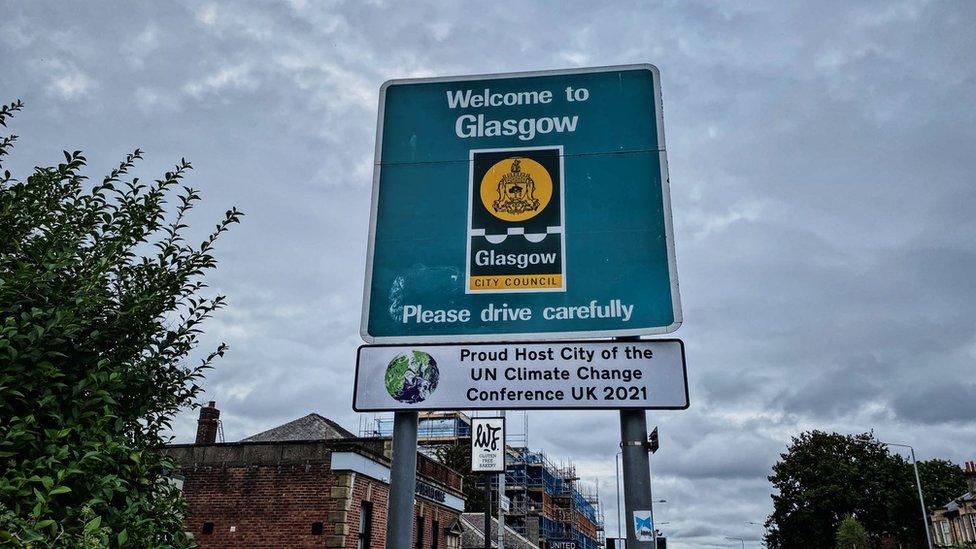
Michael has taken pictures of every welcome to Glasgow sign
- Published12 January 2022
